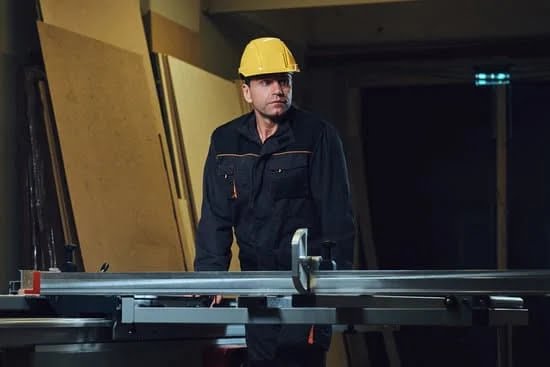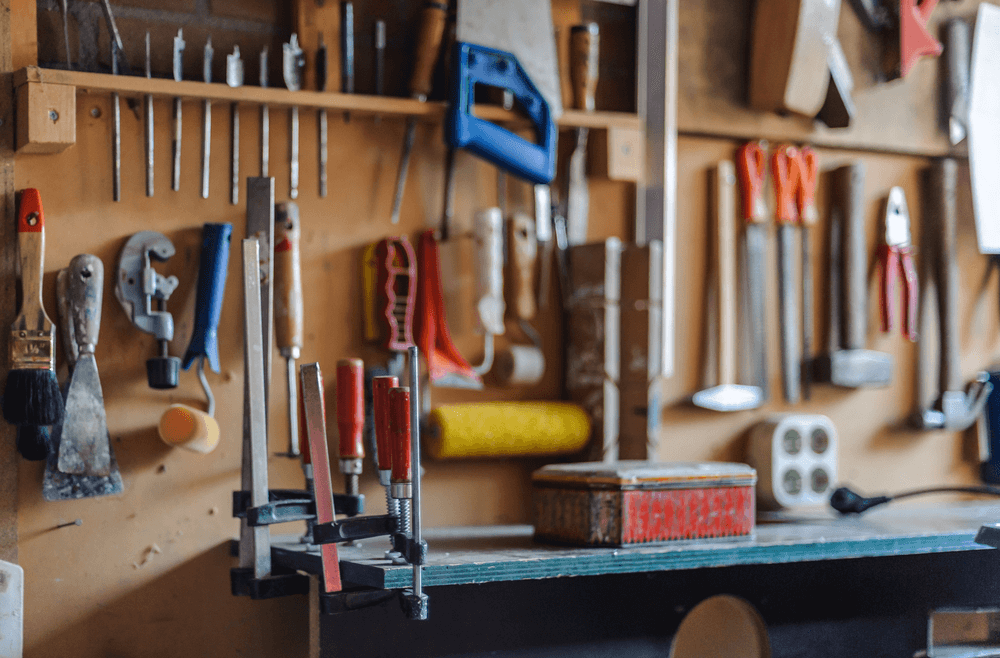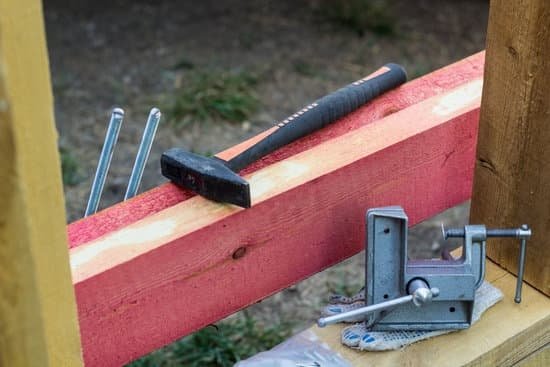Are you ready to take your woodworking skills to the next level? In this article, we will explore the world of woodworking tricks of the trade. From essential tools and understanding wood grain to mastering joinery techniques and troubleshooting common mistakes, we’ve got you covered. Whether you’re a beginner looking to improve your craftsmanship or an experienced woodworker wanting to refine your skills, these tips and tricks will help elevate your woodworking game.
Woodworking is not only a craft but also an art form that requires precision, knowledge, and practice. With the right techniques and tools, you can create stunning pieces that stand the test of time. This article will delve into the essential tools for woodworking success, as well as provide insights into understanding wood grain and how it affects your projects.
Beyond basic woodworking skills, we will also discuss advanced joints and techniques for expert craftsmanship, along with pro tips for finishing and staining your woodwork like a pro. Additionally, we’ll explore best practices for working with different types of wood and provide must-have safety tips for woodworking success. So let’s dive in and discover the secrets behind successful woodworking.
Essential Tools for Woodworking Success
Woodworking requires a variety of tools to complete projects successfully. Whether you are a beginner or an experienced woodworker, having the essential tools is crucial for achieving professional results. One of the most important woodworking tricks of the trade is to invest in high-quality tools that will last for years and provide precise cuts and measurements.
Some of the essential tools for woodworking success include a tape measure, a combination square, a hand saw or circular saw, a power drill with various drill bits, chisels, a hammer, clamps, a level, and safety equipment such as goggles and gloves. Additionally, having a reliable workbench with clamping capabilities is essential for securing your wood pieces as you work on them. These tools are vital for accurate measuring and cutting, as well as joining pieces together securely.
Another woodworking trick of the trade is to keep your tools in good condition by regularly sharpening blades and cleaning them after each use. Proper maintenance of your tools will not only extend their lifespan but also ensure that they perform at their best for every project. Investing in quality tools may require a larger initial investment, but it will ultimately save time and frustration by providing more accurate and efficient results.
Lastly, it’s important to have adequate storage for your woodworking tools to keep them organized and easily accessible. Whether you use tool chests, wall-mounted tool racks, or custom-built storage solutions, keeping your tools organized will streamline your workflow and prevent unnecessary delays during your woodworking projects.
Understanding Wood Grain and How It Affects Your Projects
Woodworking involves a deep understanding of wood grain and how it can affect the outcome of your projects. The direction, pattern, and characteristics of the wood grain play a crucial role in determining the strength, stability, and appearance of your woodworking creations. To help you better understand this essential aspect of woodworking, here are some key points to consider:
- Direction: The direction of the wood grain significantly impacts how the wood will expand and contract with changes in humidity and temperature. This is important to keep in mind when designing and assembling your projects to prevent warping or splitting.
- Pattern: Different types of wood have distinct grain patterns such as straight, spiral, interlocked, wavy, or irregular. Understanding these patterns can help you select the right wood for specific design aesthetics and structural requirements.
- Characteristics: The natural characteristics of the wood grain, such as knots, burls, figure, and growth rings, contribute to the unique beauty of each piece of wood. Embracing these features can add character to your projects while also presenting challenges for certain woodworking techniques.
To leverage woodworking tricks of the trade effectively when working with wood grain, it is crucial to practice proper selection, handling, cutting techniques, and finishing processes that align with the specific characteristics of each piece. By mastering these aspects related to wood grain understanding in woodworking projects, you will be better equipped to create durable and visually appealing pieces.
In addition to considering how the wood grain affects your project’s construction process and final appearance, there are also important considerations to keep in mind when it comes to finishing and caring for your completed workpieces.
Mastering Joinery Techniques for Stronger, Sturdier Woodwork
Joinery is the key to creating strong and durable woodwork. Whether you’re building furniture, cabinets, or other wooden projects, mastering joinery techniques is essential for ensuring the structural integrity of your creations. There are several different types of joinery techniques that woodworkers use, each with its own strengths and applications.
One of the most common and versatile joinery techniques is the dovetail joint. This joint is known for its strength and resistance to being pulled apart, making it ideal for constructing drawers and boxes. The mortise and tenon joint is another widely used technique that involves joining a projecting pin (tenon) into a hole (mortise). This type of joinery is often used in table legs and chair frames for added stability.
Another important aspect of mastering joinery techniques is understanding when to use each type of joint. Different joints have different applications based on the specific needs of a project, so knowing how to choose the right joint for the job is crucial for creating sturdy and long-lasting woodwork.
In addition to traditional woodworking tricks of the trade like using clamps to hold pieces together during glue-ups or ensuring tight-fitting joints, it’s also important to focus on precision and accuracy when cutting and shaping joints. These details can make all the difference in creating strong, professional-looking woodwork that will stand the test of time.
By honing your skills in joinery techniques, you’ll be able to take your woodworking projects to the next level while ensuring their strength and sturdiness for years to come.
Pro Tips for Finishing and Staining Your Woodwork Like a Pro
Woodworking is not just about cutting and assembling wood pieces, but also about giving your project a beautiful finish. Here are some pro tips for finishing and staining your woodwork like a pro:
- Use sandpaper with different grits to smooth the surface of the wood before applying any finish. Start with a lower grit to remove any rough spots or imperfections, then work your way up to a higher grit for a smoother finish.
- Consider using pre-stain wood conditioner before applying any stain, especially if you’re working with softwoods like pine or fir. This will help the wood to absorb the stain more evenly and reduce blotchiness.
- When applying stain, always test it on a small inconspicuous area of the wood first to ensure that you achieve the desired color. Additionally, make sure to apply the stain in the direction of the grain to avoid streaks or uneven coverage.
Applying a topcoat or protective finish is crucial to protect your woodworking project from wear and tear. Consider using varnish, polyurethane, or lacquer for a durable and long-lasting finish.
Remember that patience is key when it comes to finishing and staining woodwork. Take your time sanding, staining, and applying finishes to achieve professional-looking results.
Advanced Woodworking Joints and Techniques for Expert Craftsmanship
Woodworking is an art that requires both skill and technique to create expert craftsmanship. In this section, we will explore advanced woodworking joints and techniques that can take your woodworking projects to the next level.
One of the key woodworking tricks of the trade is mastering advanced joinery techniques such as dovetail joints, mortise and tenon joints, and box joints. These techniques provide not only strength and durability to your woodwork but also add a level of intricate detail that showcases your expertise as a woodworker. By understanding how to properly execute these joints, you can elevate the quality of your work and create pieces that stand out for their superior craftsmanship.
In addition to advanced joinery techniques, incorporating embellishments such as inlay work or wood carving can add a unique touch to your projects. Whether it’s adding decorative inlays using contrasting wood or carving intricate designs into the surface of your work, these techniques require precision and attention to detail. Utilizing these methods can set your woodworking projects apart and demonstrate a high level of skill in your craft.
Lastly, mastering the art of veneering allows woodworkers to create stunning pieces by applying thin layers of decorative wood onto a solid base. Veneering opens up endless possibilities for creating intricate patterns and designs on furniture, cabinetry, or decorative pieces. Understanding the different methods of veneering and how various types of adhesives work with different woods is essential for achieving expert craftsmanship in woodworking.
| Advanced Woodworking Joints and Techniques | Benefits |
|---|---|
| Dovetail Joints, Mortise and Tenon Joints, Box Joints | Strength, durability, intricate detail |
| Inlay Work & Wood Carving | Unique embellishments, precision, attention to detail |
| Veneering | Creative possibilities, intricate patterns, expert craftsmanship |
Best Practices for Working With Different Types of Wood
Woodworking projects often involve working with a variety of wood types, each with their own unique characteristics and challenges. Understanding how to work with different types of wood is essential for achieving professional-quality results in your projects. Whether you are working with softwoods like pine or cedar, or hardwoods such as oak or maple, there are important best practices to keep in mind.
Choosing the Right Wood for Your Project
Selecting the right type of wood for your project is crucial for its success. Softwoods are generally easier to work with and more affordable, making them ideal for beginners or when cost is a concern. Hardwoods, on the other hand, offer greater durability and a beautiful finish, making them perfect for high-end furniture and cabinetry.
Understanding Wood Characteristics
Different woods have different characteristics that can affect how they respond to cutting, sanding, and finishing. For example, some woods may be prone to warping or splitting if not properly handled, while others may have open pores that require special attention when staining or finishing.
Adapting Techniques to Different Woods
Each type of wood requires its own approach when it comes to cutting, shaping, and joining. For example, hardwoods may require sharper tools and slower cutting speeds to prevent tearout, while softer woods may be more prone to denting or scratching during handling. Adapting your woodworking tricks of the trade to suit the specific characteristics of the wood you are working with will ensure better results and minimize mistakes along the way.
Troubleshooting Common Woodworking Mistakes and How to Fix Them
Woodworking is a craft that demands precision and skill, and even the most experienced woodworkers can encounter mistakes from time to time. However, with some knowledge and know-how, many common woodworking mistakes can be fixed or even avoided altogether. In this section, we will explore some of the most common woodworking mistakes and provide you with practical solutions for fixing them.
Dealing With Tearout
Tearout is a common problem in woodworking that occurs when the wood grain splinters or tears during cutting or routing. To minimize tearout, it’s important to use sharp tools and blades, as dull ones are more likely to cause splintering. Additionally, you can reduce tearout by using masking tape on the areas being cut or by making cuts in smaller increments rather than all at once.
Correcting Misaligned Joinery
Misaligned joinery can occur when pieces of wood do not fit together perfectly due to inaccuracies in measurement or cutting. One way to fix misaligned joinery is to carefully sand and plane the misaligned edges until they fit together properly. Alternatively, you can use chisels or saws to trim down any excess material causing the misalignment.
Fixing Uneven Staining
Uneven staining can result from differences in wood porosity or uneven application of stain. To fix this issue, you can first sand down the stained surface to remove any excess stain. Then, reapply the stain evenly across the entire surface, making sure to wipe off any excess stain with a clean cloth.
By understanding these common woodworking mistakes and their remedies, you’ll be better equipped to tackle any challenges that may arise during your woodworking projects. Remember that practice makes perfect, and learning how to troubleshoot these issues will only make you a more skilled and capable woodworker in the long run.
Must-Have Safety Tips for Woodworking Success
In conclusion, mastering the art of woodworking requires not only skill and creativity but also a keen understanding of the essential tools and techniques. From identifying the right type of wood for your project to perfecting joinery techniques for stronger and sturdier woodwork, there are countless tricks of the trade that can elevate your craftsmanship to the next level.
One crucial aspect that cannot be overlooked in woodworking is safety. Adhering to best practices for safety in the workshop is paramount to ensuring a successful and injury-free woodworking experience. From wearing protective gear such as goggles, gloves, and respirators to maintaining a clean and organized workspace, these safety tips are non-negotiable for any serious woodworking enthusiast.
In addition to safety measures, it is essential to continuously educate oneself on troubleshooting common woodworking mistakes. Every woodworker encounters challenges along the way, but armed with knowledge about how to effectively address and fix these mistakes, one can confidently navigate through any project with ease. Incorporating all these woodworking tricks of the trade into your skill set will not only enhance your abilities but also elevate the quality of your finished products.
Frequently Asked Questions
How Can I Be a Better Woodworker?
To become a better woodworker, it’s important to continually practice and improve your skills. Take the time to learn new techniques, seek out advice from experienced woodworkers, and be open to constructive criticism. Additionally, investing in quality tools and materials can make a significant difference in the quality of your work.
How Can I Make My Woodworking More Efficient?
Making your woodworking more efficient requires careful planning and organization. Set up a well-organized workspace, use power tools when appropriate, and create a streamlined workflow for each project. Additionally, learning to use tools properly and safely can save time and minimize mistakes.
How to Do Wooden Work?
Wooden work, or woodworking, involves working with wood to create furniture, crafts, or other items. Start by choosing the right type of wood for your project and make sure you have the necessary tools for cutting, shaping, and finishing the wood. Follow detailed plans or templates if needed and always prioritize safety while working with wood.

Hi everyone! I’m a woodworker and blogger, and this is my woodworking blog. In my blog, I share tips and tricks for woodworkers of all skill levels, as well as project ideas that you can try yourself.





